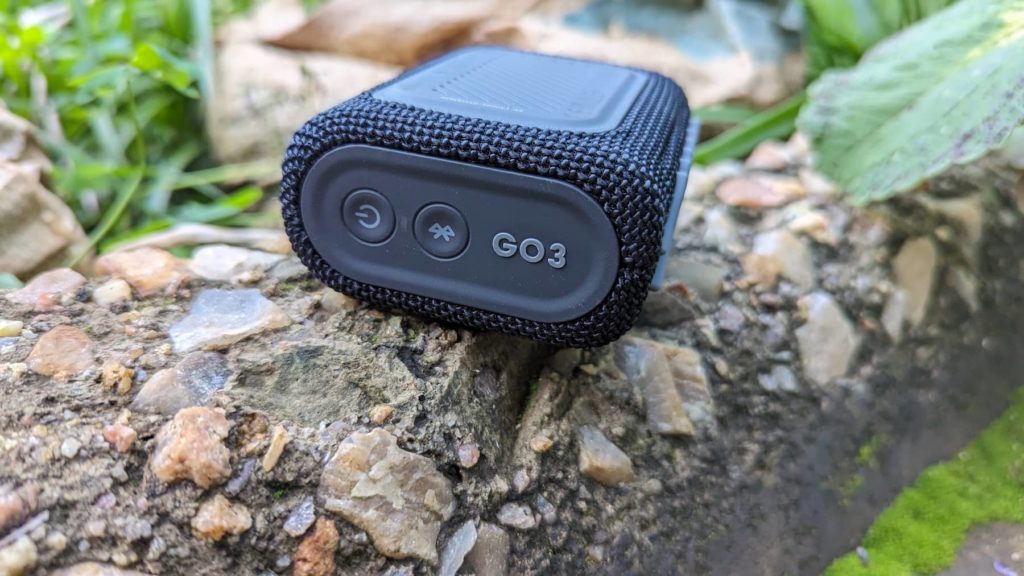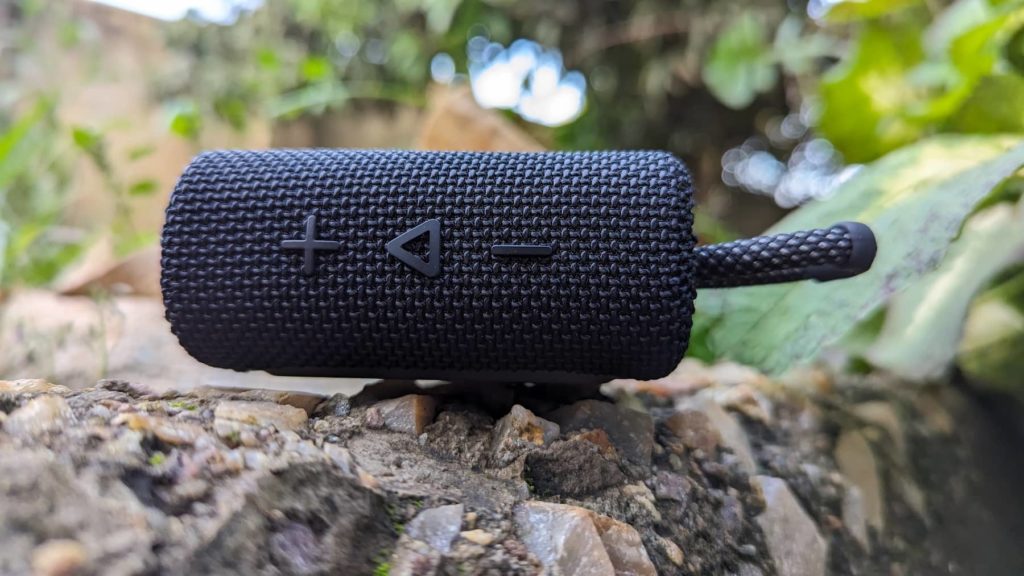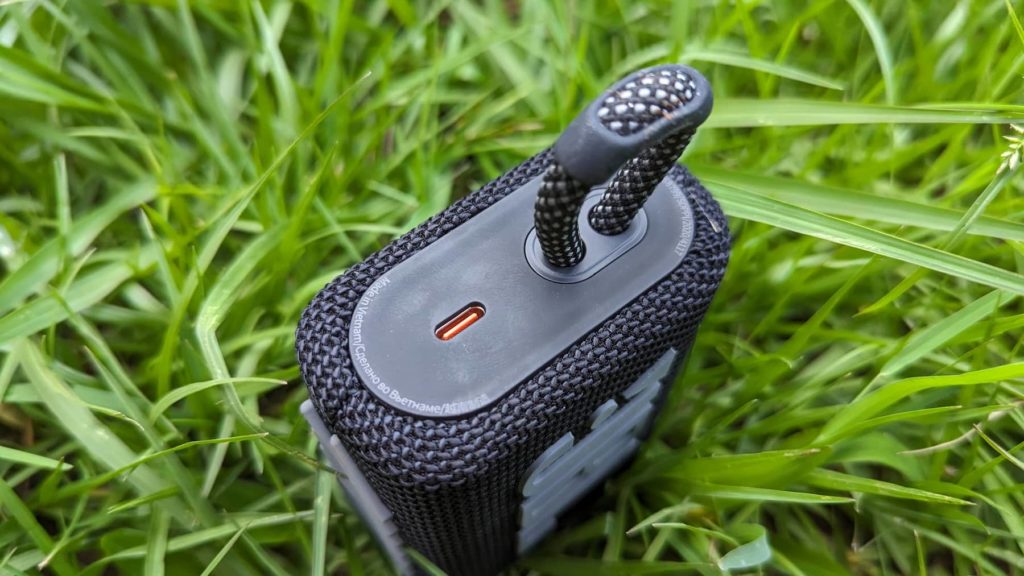If you love music and the great outdoors, you’ll love the JBL Go 3. This tiny speaker is a big deal when it comes to sound quality, ruggedy build, and portability. It’s designed to handle any outdoor challenge, from water splashes to the ever present dust. It’s also easy to carry around, thanks to its compact size and handy strap.
It might not have all the bells and whistles, but it’s still worth a minute of your time. In this review, we are going to look at what makes the JBL Go 3 tick and where it falls short. Let’s get to it!
Advertisement – Continue reading below
Design & Build

The JBL Go 3 is a small but durable speaker that can withstand water and dust. It has a rectangular shape with rounded edges and a fabric cover that gives it a nice touch. The rubber sides and bottom prevent it from sliding on smooth surfaces although that will happen regardless when that beat drops hard enough. Trust me on this one. The power button and bluetooth button are located on one side while the volume controls are located on top with the expectation that you will stand the speaker or have it lie on the rubberised side.
The speaker has a USB-C port, a step up from the MicroUSB port used by its predecessor. Curiously, the USB-C port is not protected by a flap as most water resistant bluetooth speakers normally are, but it still boasts an IP67 rating. The Go 3 can survive being submerged in up to 1 meter of water for up to 30 minutes. However, keep in mind that it will not float and as we are not fish, we can’t hear the sound once its submerged.
Sound quality

The JBL Go 3 is not the best sounding speaker in the JBL lineup, but it does a decent job for its size and price. It supports only the basic SBC codec and uses Bluetooth 5.1 for wireless connection. The sound is clear and balanced, but not very detailed or dynamic.
From out testing, we came to the conclusion that the highs are not very crisp especially at high volume and the lows are not very deep. We played Ready for War by Joznes, 2WEI, Kataem. The vocals are crisp enough, so there are no complaints there, but the audio fidelity of the accompanying instruments is rather disappointing. It gets worse when the bass beat drops, lacking that extra punch and depth.
The speaker can get loud enough for a small room, but it may distort at high volumes. The sound quality is good enough for podcasts and vocals, but not for audiophiles or music lovers. We had an abundance of Anker devices on hand to test the variance in sound quality. The Flare 2 and Flare Mini, and especially the Soundcore Mini 3 output better soundstage, highs, mids and lows. The Soundcore 2 leaned more on the bass output but was not as balanced as the JBL Go 3.
Read more:
Advertisement – Continue reading below
Battery life & Charging

The speaker has a decent long battery life for its size. We were able to get 8 hours of playback time at moderate volume, which is a bit more than the 5 hours that JBL claims. At full volume, the battery doesn’t last that long, unfortunately, which is to be expected.
I am a bit disappointed in the charging time, though. The JBL Go 3 doesnot support fast charging so expect it to take almost 3 hours to juice right back. It wasn’t a deal breaker though for me.
Should you buy the JBL Go 3?
The JBL Go 3 is a great speaker for outdoor use, thanks to its rugged design and waterproof feature. It also has a strap that you can use to attach it to your backpack or your belt, or hang it from a branch. It is compact and lightweight, making it easy to carry around.
However, if you are looking for a speaker that delivers better sound quality for a similar price, you may want to check out the Soundcore Mini 3. It has a richer and fuller sound, as well as more features like EQ modes and PartyCast to connect two or more speakers. If anything, I would recommend the SRS-XB12 for a longer lasting battery and better sound.
